Off to Philly to taste Bordeaux 2016
Posted on January 18, 2019

By Panos Kakaviatos for wine-chronicles.com
18 January 2019
Dear Readers,
I am off to Philly this coming Sunday 20 January to taste many Bordeaux 2016 from bottle.
In October and December last year, I already had the chance to taste many Bordeaux 2016 from bottle, so this visit will fill in some gaps, such as Château Haut Bailly, which I did not taste late last year, among others.
As you can see in the video below, I think that Pomerol and the northern Médoc were quite bright stars based on tastings last year, but you can find excellent wines throughout Bordeaux, as I hope to confirm when I visit the gorgeous Rittenhouse Hotel in Philadelphia, where the tasting is to take place.
Participants at the Union Des Grands Crus de Bordeaux tasting in Philadelphia will get a chance to not only enjoy an unparalleled Bordeaux tasting from more than 70 French châteaux across 12 appellations, but also to meet the owners or their representatives.
In case anyone is interested and can go, you should consult this webpage: https://www.phillymag.com/grandscrus
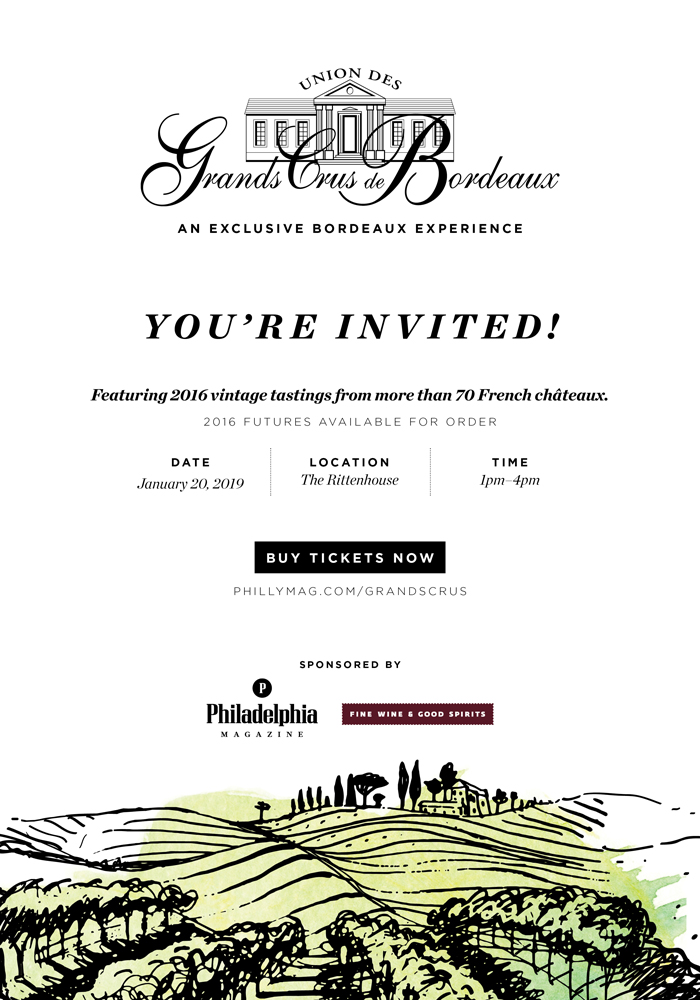
So stay tuned for my update on Bordeaux 2016 from bottle, coming next week, and if you can, please do consider a donation to my website of at least $30 per year, as it would help me to finance a revamping of this site. I also plan to organize high-end Bordeaux wine tours in the near future, which has been my intention for many years, but I just have not found the time to organize one yet. But that will be happening!
Yours,
Panos
Ringing in 2019 with good vintages (not “great”)
Posted on January 11, 2019

By Panos Kakaviatos for wine-chronicles.com
11 January 2019
After an annual holiday dinner with wine loving pals – this year at the French embassy in Washington D.C. – the overriding theme was “good” vintages.
Neither “off” nor “great”, but vintages that sometimes get overlooked by critics seeking to obtain fame with 100 point scores.
And to some extent, lesser known wines that official critics did not see coming.
Before I broke bread (and popped corks) with Ken Brown, Howard Cooper, Ken Barr, Chris Bublitz, David Zimmerman, Scot Hasselman, Charles Stewart, Paul Marquardt and Karl Kellar, I cracked open a wine with a highly regarded pedigree to be sure: Château Ducru Beaucaillou. I had tasted the wine along with Grand Puy Lacoste together, before the two brothers parted ways (Francois Xavier Borie exclusively owns Grand Puy Lacoste while Bruno Borie exclusively owns Ducru). That was back in 2003, just before the official release of the 2001 vintage.
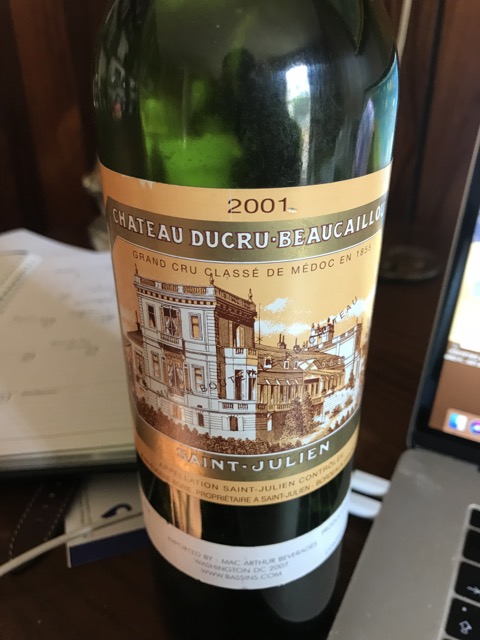
It was $50 on release. Back when highly rated Bordeaux was more affordable.
Coming on the heels of the fabled 2000 vintage, dubbed a “wine of the century” (several others followed within the next decade), some derided 2001 as a “restaurant wine”. But I really loved the floral elegance of the Ducru 2001 and hesitated not one second before purchasing six bottles en primeur for about $50 a bottle.
Fast forward to January 2019 and those “restaurant vintage” naysayers remain oh so wrong. 2001 in Bordeaux can be fabulous and even beat 2000 in some cases, especially on the Right Bank and in the Graves region. The 2000 vintage is better in Saint Julien and in the Médoc in general, but this Ducru is excellent as it combines true elegance with refined texture. It exudes some tertiary aromatics and flavors but there’s much ripe fruit as the wine is still in a youthful phase. Call it late adolescence. I have two more bottles left from a six pack that I had purchased upon release and, really, there is no rush to drink this. But if you do open one, you will not be sorry. In terms of points? It easily gets a 93 and maybe deserves more.
After an annual holiday dinner with dear wine loving pals – this year at the French embassy – the overriding theme was “good” vintages. Neither off nor great, vintages that sometimes get overlooked by official critics seeking to obtain fame with 100 point scores. And to some extent, lesser known wines that official critics did not see coming.
So, read on 😉 … Read More
Splendid cheese ceremony
Posted on December 8, 2018

For the Bucket List
By Panos Kakaviatos 8 December 2018 If you ever find yourself near Basel, Switzerland, do yourself a favor and reserve an evening of the “Cérémonie des Fromages” at the famous Antony Eleveur de Fromages. The sheer talent of owners Bernard and son Jean-François (never – ever say “pasteurized”), shines bright over an all-cheese dinner. I am not a cheese specialist, but the quality and purity of flavor from the cheeses aged here is undeniable. Indeed, the owners seek only the very best producers of cheese across France and from other parts of the world and then proceed to carefully age the selected cheeses.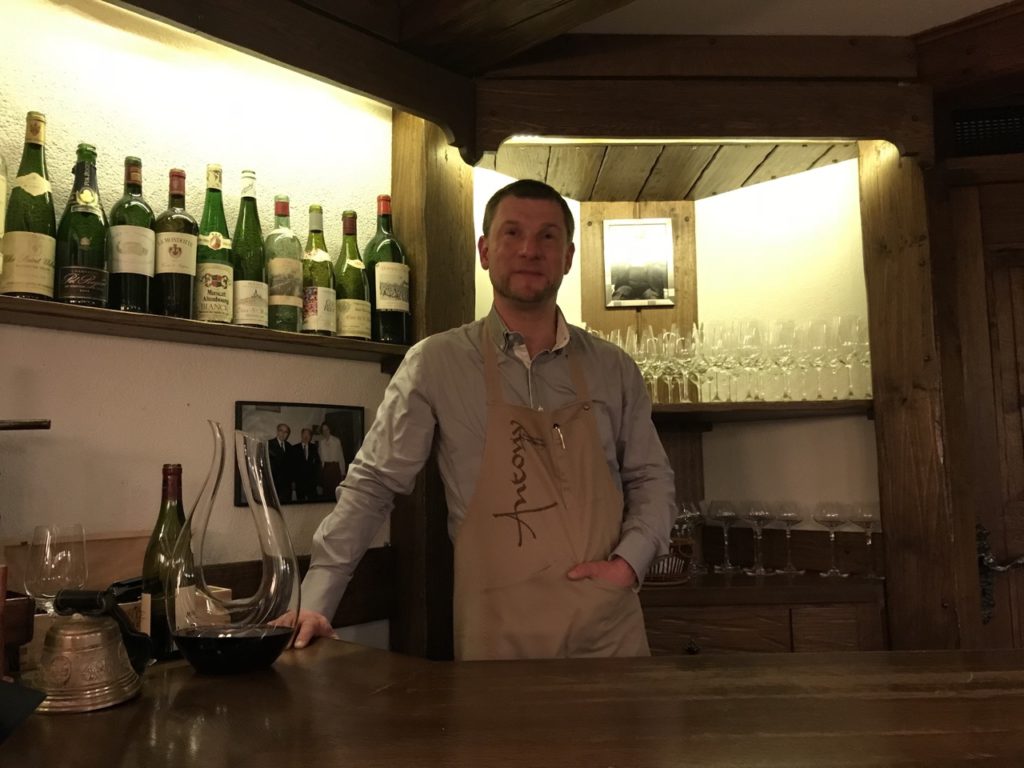

Montecucco charm and quality
Posted on November 30, 2018

Or why I should have visited Tuscan vineyards earlier
30 November 2018
By Panos Kakaviatos for Wine-Chronicles
This is Part I of a three-part article on the Montecucco DOC of Tuscany
A three-day, deftly packed visit of wineries earlier this autumn, with comprehensive tastings of Montecucco in Tuscany, proved one of the best wine tours ever. And it revealed Sangiovese-based wines of remarkably fine consistency, at competitive prices. Not to mention some other excellent wines from both white and red grapes.
2018 marks 20 years of the recognition of Designation of Origin of Montecucco Wines so it was great to have been invited and met friends both old and new to mark the occasion.
We were joined on several occasions throughout the visit by Claudio Carmelo Tipa, president of the Consortium for the Protection of Montecucco Wines, at his Colle Massari Tenuta di Montecucco estate starting on Thursday 20 September for visits and tastings.
A quick history
To briefly recap the history of this niche region, it was only at the end of the 1990s that the the DOC Montecucco began, thanks to some young winemakers and their Sangiovese, which comes to life where the Maremma Toscana gives way to the slopes of the Monte Amiata, just in the middle of the Brunello di Montalcino and Morellino di Scansano’s DOCGs. Read More
Northern Médoc: Sweet spots confirmed in 2016
Posted on November 12, 2018

A modern era 1986?
Great stuff in Saint Julien, Pauillac and Saint Estèphe ?
(Bordeaux 2016 from bottle, part 2)
11 November 2018
By Panos Kakaviatos for wine-chronicles.com
Just as we saw how well Pomerol excelled in 2016, another area of consumer interest, also in terms of quality across all price points, is the northern Médoc. And not only that, but many of the wines as tasted from bottle fulfilled their promise from barrel as you can consult my “sweet spot” barrel tasting notes:
While I liked wines from the southern Médoc, the most interesting Left Bankers came from the north; at least at this very early stage from bottle. And this high quality applies also, if to a lesser extent, to cru bourgeois level wines, as I tasted some at the Grand Cercle.
Furthermore, for upscale wines, many of which I tasted blind as organized by the UGCB during my visit to Bordeaux last month, there is no need to spend tons of cash on first growths to get aristocratic quality.
Indeed, so called Super Seconds and other “over performing” wines not officially recognized as top tier, did very well in 2016, so much so that for example I would score, say, Château Léoville Poyferré just as high, if not higher, than Château Margaux in 2016.
Modern era 1986?
Philippe Dhalluin of Château Mouton Rothschild may have said it best when comparing the first growth to a “modern era 1986” because there of high tannins and highish acidities: I would think that many 2016s will close down for a period before starting to have a proper drinking window, say, 10 years down the line in your cellar. Now, 10 years is not that much compared to 1986, as some of those are kind of closed still in 2018!
Certainly Léoville Las Cases earns a 100 point score or somewhere close to that. Tasting it from bottle with Jane Anson, we agreed that the 2016 LLC is nothing short of superlative.
From Saint Julien to Saint Estèphe, the northern Médoc features many fine wines and even stars, from humbly priced wines like Château Château Petit Bocq to the mighty Château Montrose, by way of a downright excellent (and slightly more “mid- to high-priced”) Château Calon Ségur.
Unlike in Pomerol, we tasted many of these wines blind (with notable exceptions of Château Pontet Canet, Château Léoville Las Cases, Château Ducru Beaucaillou and the first growths that we were able to taste).It is a pity that such truly great wines do not allow themselves to be compared blind with their neighbors.
Let me just go to a quick “box score” of my overall northern Médoc favorites in terms of “price has no meaning” favorites to “price/quality ratio favorites”, as follows:
Six northern Médocs I really liked, where price has less meaning (we did not taste Château Latour from bottle)
- Château Léoville Las Cases (100)
- Château Mouton Rothschild (100)
- Château Pontet Canet (98+)
- Château Léoville Poyferre (98)
- Château Ducru Beaucaillou (98)
- Château Lynch Bages (97+)
Six northern Médocs with (very) appealing price/quality ratios at varying price points
- Château Grand Puy Lacoste (96+)
- Château Gruaud Larose (96)
- Château Calon Ségur (95+)
- Château Lafon Rochet (93+)
- Château Potensac (92)
- Château Fonbadet (92)
Special mention to Château Croizet Bages for a particularly fine performance from bottle!
Tasting Notes: As usual, if I liked in particular, in bold. If red and bold, even more. And if underlined, too? A kind of wine nirvana. Asterisks* mean a particularly good price/quality ratio.
Visiting Château Léoville Las Cases
Well, let’s just start with one of the best wines of the 2016 vintage, hands down. Of course this estate is part of the Domaines Delon, so we tasted some others, too, among which counts very possibly the best price/quality ratio for the Médoc, so here goes.
Château Potensac* – Lovely nose, with juicy fruit, red and black. There is more than your usual elegance from this estate, as the winemaking has gotten more fine tuned. Blending 44% Merlot, 39% Cabernet Sauvignon, 15% Cabernet Franc and 2% Petit Verdot, this wine clocks in at 13.8% alcohol, with an IPT of 75 and a pH of 3.48. Bottled in April, it is a bit closed now, but that is normal. What is foremost important is the suave nature that you get from this humble AOC Médoc. I would recommend purchasing magnum formats to serve at upscale garden parties or any parties, over the next 5-15 years. Magnums require more bottle aging, so crack it open in, say, 2023 for an early drinking window and pour away. The magnum price lies between $50 and $60 and will reward you more than that! 92
Clos du Marquis – This estate is getting better and better, and – mind you – it is not the second wine of Léoville Las Cases (anymore). Blending 75% Cabernet Sauvignon, 24% Merlot and 3% Cabernet Franc, this wine was made from grapes of vines that average 35 years old (youngest are 18). The name of Clos du Marquis, created in 1902, was inspired by the Petit Clos adjacent to the Château de Léoville, residence of the Marquis de Las Cases. The Clos du Marquis is produced from top terroirs of the Saint-Julien Appellation that were not part of the old Domaine de Léoville cadastre. These terroirs are located slightly to the west and are surrounded by many of today’s Super Seconds, including Léoville Poyferré, Léoville Barton and Pichon Longueville Comtesse de Lalande. The 2016 Clos du Marquis offers a fine expression of the Saint Julien character, with pure cassis and pencil lead aromatics. The palate exhibits fine tonicity on a long and lifting finish. One of the best Clos du Marquis I recall enjoying. And there is structure and potential complexity with aging potential. The alcohol is just over 13.5% with 3.87 grams per liter of acidity and a rather high IPT of 78. 93+
The Clos du Marquis has improved since the estate made selections more refined, with the recent second wine of Clos du Marquis, dubbed, La Petite Marquise, which offers succulent fruit on the palate, with a cool blueberry aspect. Fine for restaurants, this smooth blend of 52% Cabernet Sauvignon and 48% Merlot. 90 Read More
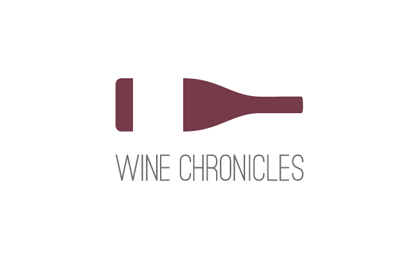 Wine Chronicles
Wine Chronicles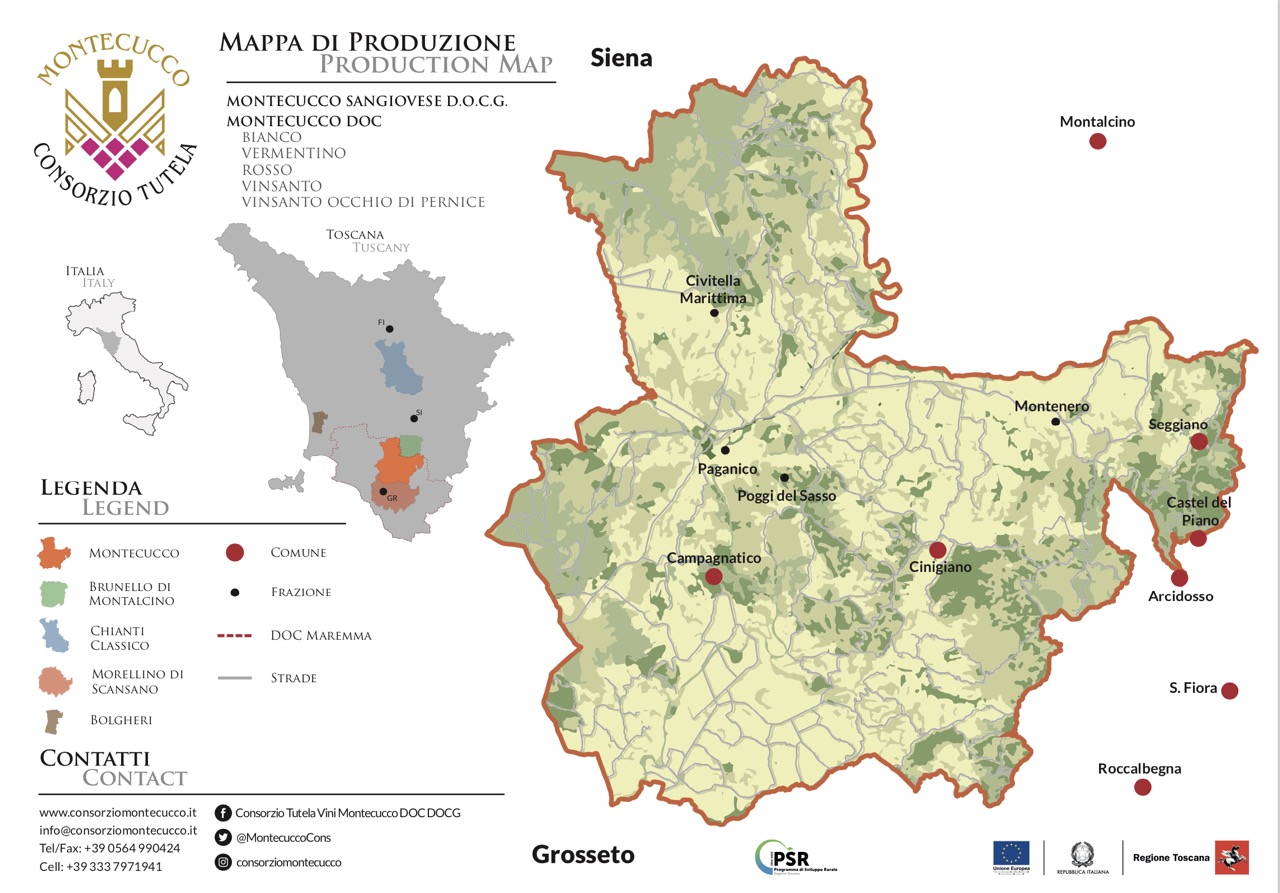
Recent Comments